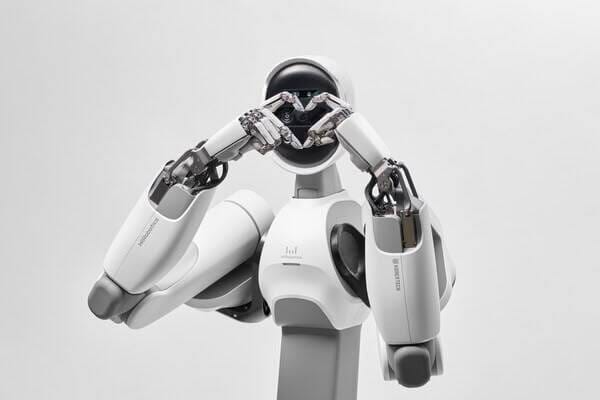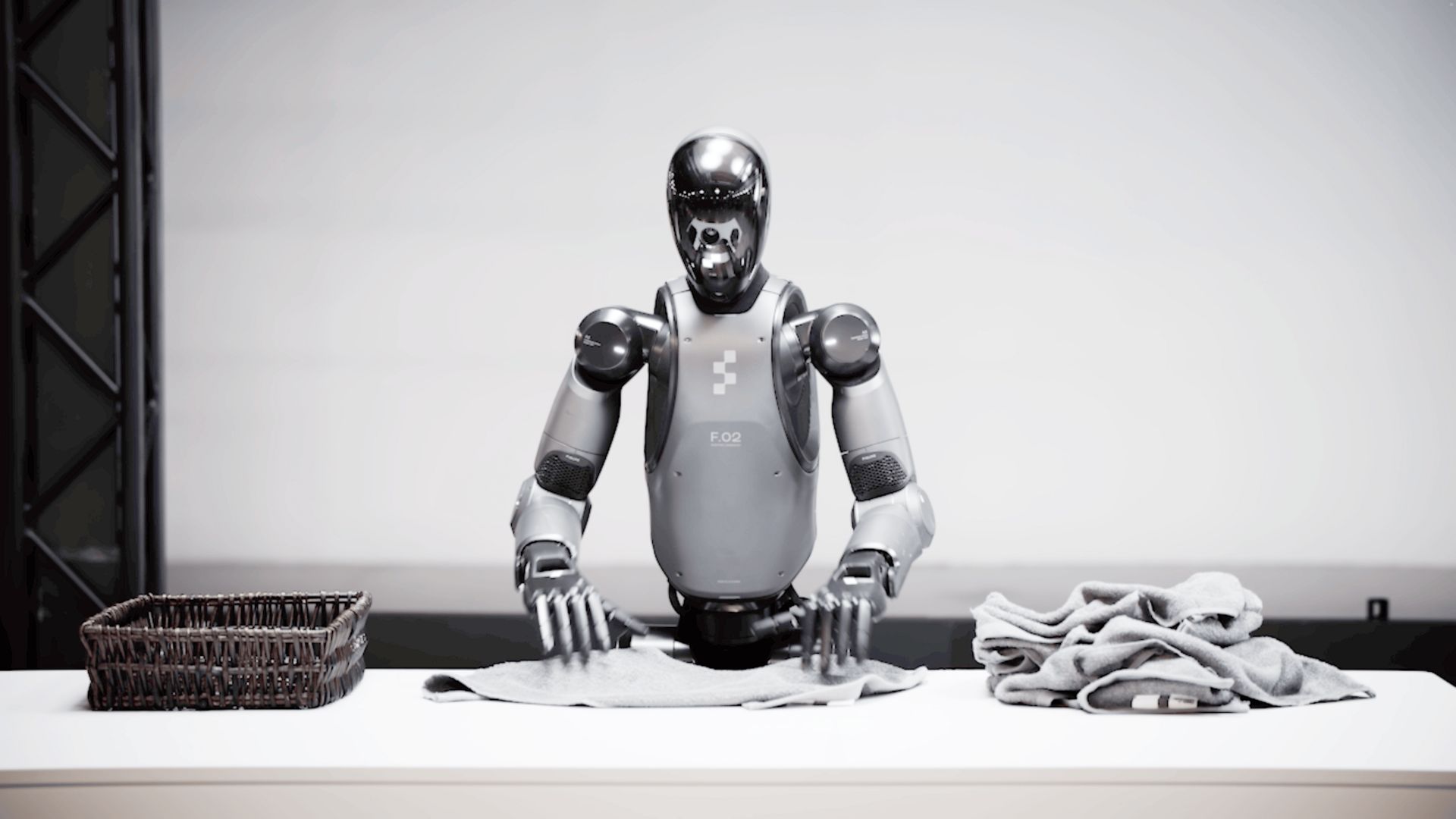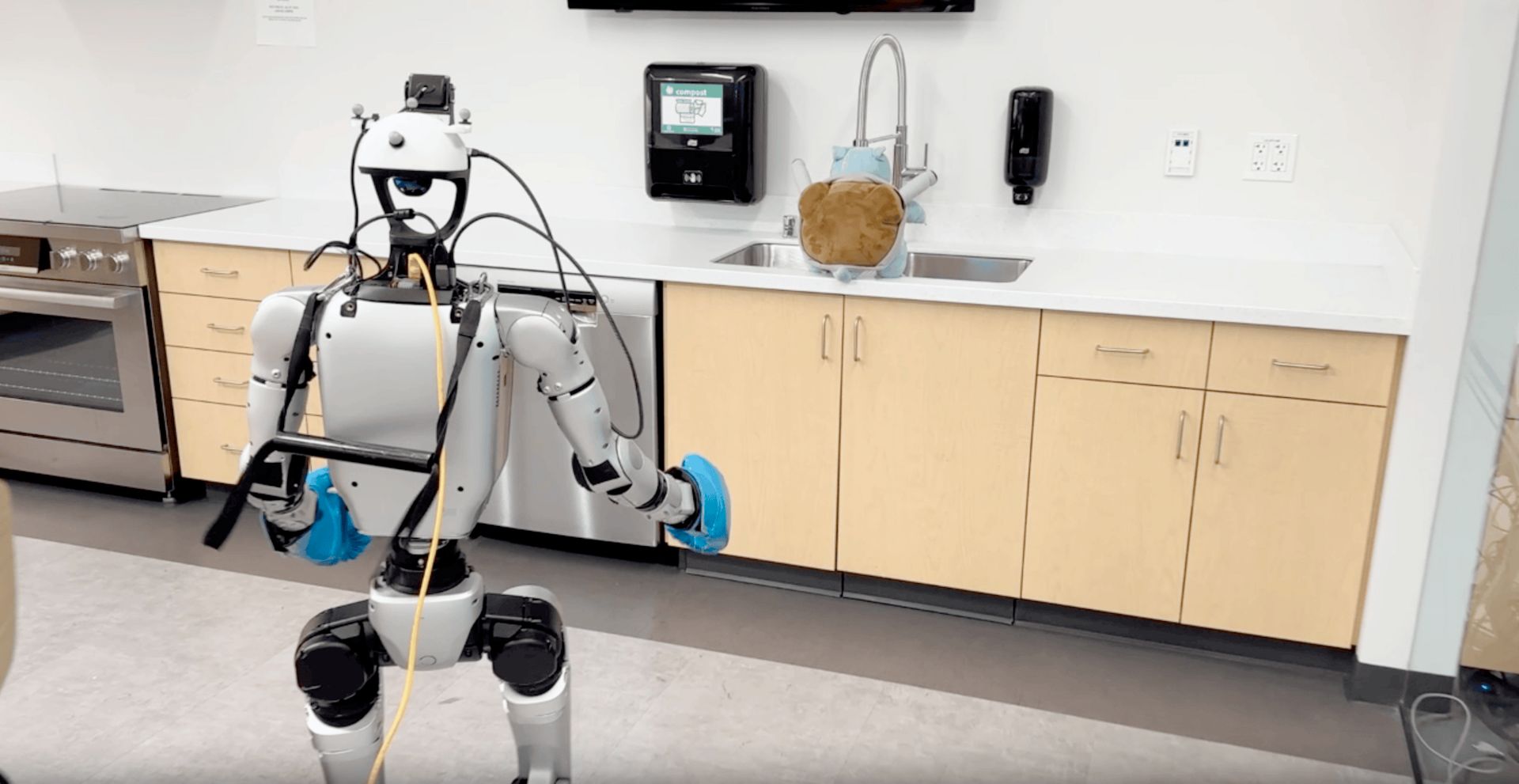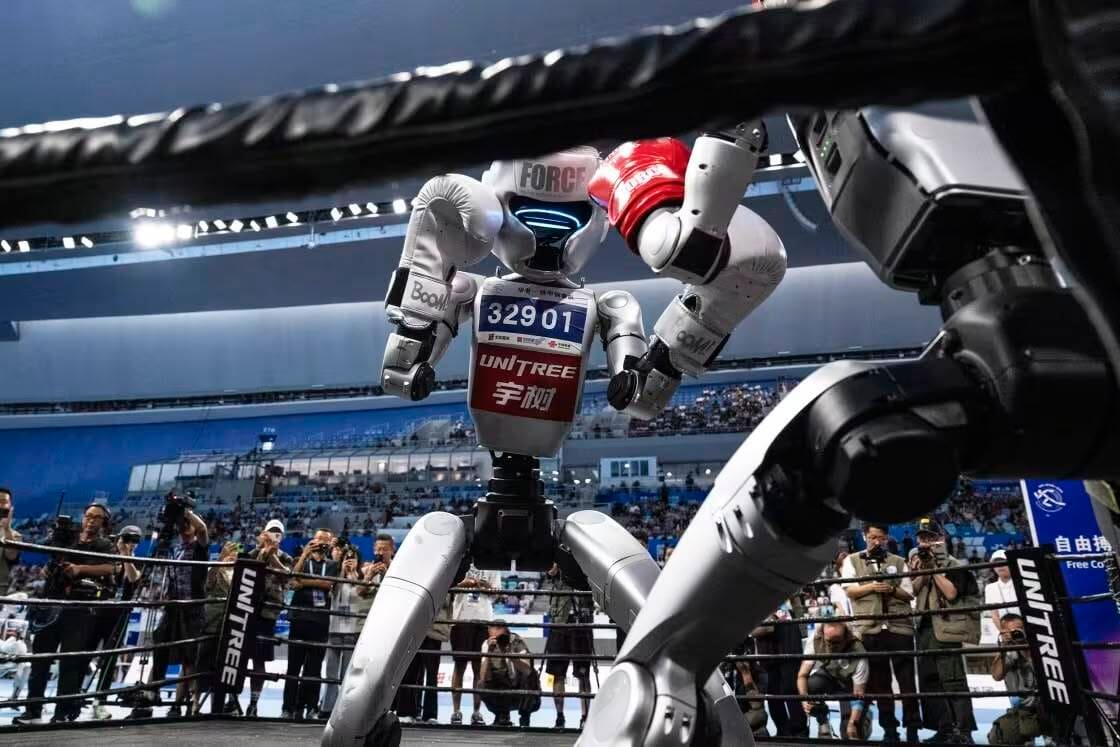August 20, 2025
Good morning! A South Korean company just cracked the code for robot hands that detect forces as light as 100 grams while maintaining millimeter precision at industrial strength.
Could this be the moment robots finally become safe enough for your kitchen and strong enough for your factory?
In today's recap:
Korean robot gets human hands with superhuman strength
Same AI brain masters both warehouses and laundry
South Africa builds first homegrown humanoid robot
Stanford teaches robots to navigate like humans
China hosts the first robot Olympics with 500 athletes
WIROBOTICS
WIRobotics unveils ALLEX robot with human-like hands
Recaply: South Korean robotics company WIRobotics revealed ALLEX, a breakthrough humanoid robot featuring advanced force-sensing capabilities and human-sized hands that respond to physical contact like real limbs.
Key notes:
ALLEX hands feature 15 degrees of freedom with 40 N fingertip force.
The robot can lift over 30 kg while maintaining precise 0.3mm accuracy.
Ultra-low-friction arms provide 10x better performance than standard robots.
Detects forces as small as 100 grams without requiring tactile sensors.
Lightweight 5 kg arm assembly handles 3+ kg loads across the whole workspace.
First compliant humanoid with whole-body force control capabilities.
Impact: ALLEX represents a significant leap in humanoid robotics by combining human-level dexterity with industrial strength. This technology could enable robots to work safely alongside humans in manufacturing, healthcare, and household tasks.
FIGURE
Figure robot masters laundry folding with the same AI brain
Recaply: Figure unveiled the first humanoid robot to fold laundry fully autonomously using their Helix AI system. The breakthrough uses the exact same neural network architecture that handled warehouse logistics - no code changes required.
Key notes:
First humanoid with multi-fingered hands to fold laundry autonomously.
The same AI architecture was used for logistics tasks, but the training data was different.
Handles deformable towels requiring precise finger control and adaptation.
The robot maintains eye contact and uses hand gestures during interaction.
An end-to-end neural network operates without object-level representations.
Can recover from errors like picking up multiple towels at once.
Impact: This demonstrates true general-purpose AI in robotics. One platform seamlessly transitions between industrial and household tasks, proving that scalable robot intelligence is possible without rebuilding systems from scratch.
STELLENBOSCH UNIVERSITY
South Africa unveils first locally built humanoid robot
Recaply: Stellenbosch University researchers have introduced George, South Africa's first domestically produced humanoid robot, marking a significant milestone in African robotics development.
Key notes:
George was built by SU's Electrical and Electronic Engineering department under Dr. William Duckitt's leadership.
The robot can track movements, mimic human gestures, and interact with objects in real-time.
Uses advanced large language models paired with vision-language processors for object recognition.
Designed as a collaborative robot for both home and workplace environments.
The team plans to make George fully bipedal for autonomous walking with new funding.
George has already visited schools and demonstrated capabilities at university events.
Impact: George represents Africa's entry into advanced humanoid robotics research. By establishing local expertise in collaborative robotics, Stellenbosch University positions South Africa as an emerging player in the global robotics industry, potentially reducing dependence on foreign technology.
STANFORD
Stanford's HEAD system teaches robots human-like navigation
Recaply: Stanford researchers unveiled HEAD, a breakthrough system that trains humanoid robots to navigate and reach objects like humans do, using data from human motion and vision.
Key notes:
Uses modular design with high-level planning and low-level movement control.
Trained on human navigation data collected through Aria smart glasses.
Controls three key points: eyes, left hand, and right hand movements.
Successfully tested in both simulation and real-world environments.
Separates vision perception from physical actions for better learning.
Enables robots to work in spaces designed for humans.
Impact: HEAD represents a significant step toward humanoid robots that can naturally navigate human environments. By learning from actual human movement data, these robots could soon assist in homes, offices, and other complex spaces where traditional robots struggle.
ROBOTICS & CHINA
China hosts the first humanoid robot Olympics in Beijing
Recaply: China made history by hosting the world's first sports competition for humanoid robots, with 500 robot athletes from 16 countries competing in Beijing's Olympic venue over the weekend.
Key notes:
Robots competed in 26 events, including running, kickboxing, soccer, and practical job skills.
Many robots broke down, fell over, or failed to complete tasks during the competition.
Unitree robots from China won four gold medals in track events.
The event showcased both progress and current limitations of robotics technology.
Competition highlights growing US-China rivalry in AI development.
Judges scored robot performances with Olympic-level seriousness.
Impact: The games reveal China's massive government investment in robotics as it races to close the AI gap with the United States. While robots still struggle with basic tasks, the event demonstrates how quickly this technology is advancing.
NEWS
📰 What matters in Robotics right now?
Nvidia and Foxconn team up to produce humanoid robots, showcasing the first models this November for industrial environments like factories and logistics hubs.
Stanford students introduced Masquerade, which edits human videos to look like robot demos, improving robot training performance in new environments.
Unitree teased its next-generation full-size humanoid robot standing 5'10" tall with 31 joint degrees of freedom, resembling the R1 model design.
EngineAI unveiled the T-800 humanoid robot, standing 6'1" and weighing 187 pounds, featuring 41 joints and scheduled for combat competition in December 2025.
DHL invests £550M to deploy over 1,000 robots across UK operations, supporting growing e-commerce and healthcare demand through 2030.
Yale engineers created the Sphinx Hand, a robotic gripper that combines grasping and rotating functions without requiring sensors or cameras.
Chinese scientists developed GEAIR, the world's first AI-powered breeding robot that autonomously performs cross-pollination to improve crop breeding.
That’s a wrap for today!
We hope today’s insights saved you time and brought more clarity to your day.
👉 Got a second, Your feedback help us make Recaply even better.
What did you think of today's issue?
Have an idea for Recaply Robotics?
We’re all ears. Send your thoughts to [email protected] — we read every message and love turning your ideas into reality.
See you in the next recap,
— Jason @ Recaply Robotics







